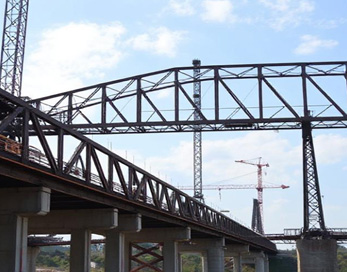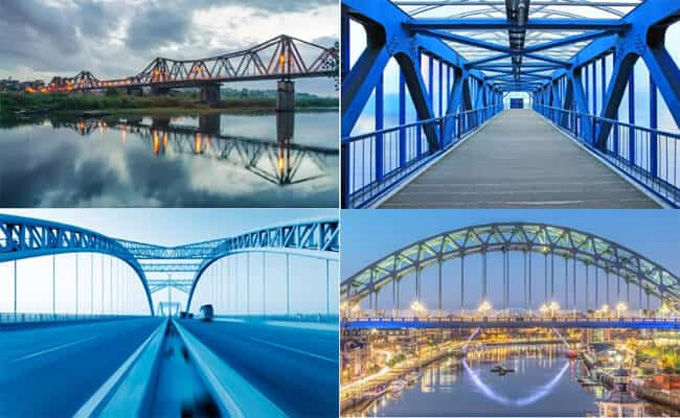
Learn everything that goes into constructing a Steel bridge

Steel bridges are able to span long distances and have higher strength. In modern day, most builders prefer the use of steel as the key raw material in bridges. The use of steel in bridges helps to bring economic benefits along with long-term durability and efficiency. The steel bridges can be sustainable for the long term, which brings environmental benefits, and they can also be reused. In addition, the steel bridges can be secured and aesthetically appealing for modern society.

Learn about the structural components of steel bridges
The steel bridge can be constructed with different structural components, which can vary depending on the size and type of the bridge. The structural components of the steel bridges are as follows:
Beams
The beams are the steel sections or fabrications of the steel bridges, which help to support the entire weight of the bridge structure. The steel beams can be available in different shapes, for example, box girders, trusses, I-beams or H-beams.
Grinders
The steel grinders help to provide lateral support to the bridge structure. In addition, the steel girders have a higher load-bearing capacity as it has been designed to carry a large amount of moving and dynamic loads.
Columns
The columns of the steel bridge help to provide vertical support to the entire steel bridge. The columns of the steel bridges are a combination of steel and reinforced concrete, which helps to protect the steel against corrosion.
Deck
A deck refers to the walkway or roadway of the bridge structure, which has been constructed with reinforced steel or concrete. A series of grinders has been used to support the deck of the steel bridge.
Joints
In the steel bridges, different types of structural components have been joined together. In this context, the joints have been designed to be flexible and rigid, and this can be achieved by bolting or welding.
Discuss the design and construction methods of the steel bridges
The design and construction process of the steel bridges can be broken down into several stages, which are as follows:
Setting the foundation of the bridge
At first, the layout and setup of the foundation for a bridge should be done on the basis of the quality and types of soil present at the construction site of that bridge. The analysis of the soil and construction site helps to determine the construction process of the bridge foundation, as well as helps to determine the appropriate number of TMT rods to be placed in the bridge structure to ensure its sturdiness.
Pillar construction
The pillars of the steel bridge have been constructed on the basis of its load-bearing capacity and the area it will cover. The steel bars and plates have been used for building the grinders of the steel bridges, which are corrosion-resistant and can bind tightly with the concrete material.
Assembling of the bridge deck components
The deck components of the steel bridge have been made with steel and prefabricated, which have been brought to the bridge construction site to assemble. These bridge deck components help to ensure the longer span and strength of the steel bridge structure. The bridge deck components have been assembled with the help of the cranes and tightly assembled by using the welding process.
Reinforcement of the concrete
In between the spaces of the steel components, concrete materials have been poured to bond tightly with the steel parts. The structural steel rods and beams of the steel bridge structure have been designed along with ribs and lugs, which help to ensure that the concrete will not slip from the surface of the bridge structure. This concrete reinforcement process helps to ensure the safety of the entire steel bridge structure.
Final checking and quality testing
After constructing the entire bridge structure, Asphalt has been laid out on the road surface to strengthen the bridge. After that, the entire steel bridge has been tested for its capacity to resist loads. The strength of the road surface of the steel bridge has also been tested to check its ability to resist the upcoming traffic flow. After completing the final check of the entire bridge, it was inaugurated and opened for the people.
Effectiveness of steel bridges
Long-term span
The steel bridges have the ability to span long distances with minimal or intermediate support. His longer span feature makes the steel bridges suitable for crossing the large water bodies, valleys or other types of obstacles.
Long-term durability
The steel bridge has a higher strength-to-weight ratio, which can resist the heavy loads even in harsh weather conditions.
Aesthetically appealing to modern society
The steel bridges can be designed aesthetically pleasing, along with unique designs and shapes; as a result, it is mostly used to construct monumental bridges.
Requiring low maintenance
Minimal maintenance is required for the steel bridges as compared to the other types of bridges. The steel bridges are resistant to corrosion and deterioration, which makes them a cost-effective choice. The steel bridges can also be relocated, recycled and reused.
To learn more, watch the following video tutorial.
Video Source: Modern Creative
Speedy construction process
The components of the steel bridges can be prefabricated off-site, and they can be assembled on-site, which helps to reduce the overall construction time of the steel bridge.


